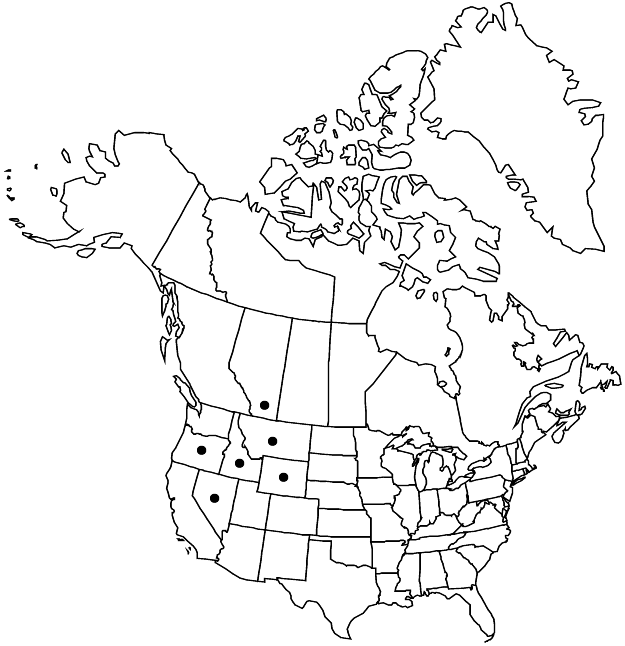Eriogonum ovalifolium var. depressum
Sci. Stud. Montana Coll. Agric., Bot. 1: 49. 1905.
Plants 1–2.5 dm wide. Leaf-blades elliptic or infrequently oblong to spatulate, 0.4–0.8 cm, tomentose to floccose, margins not brownish. Scapes often suberect to decumbent, 1–4 (–8) cm, thinly floccose. Inflorescences capitate, 1–1.5 (–2) cm wide; branches absent. Involucres 2–4 per cluster, 3–3.5 mm. Flowers 4–5 mm; perianth white to rose.
Phenology: Flowering Jun–Aug.
Habitat: Sandy to gravelly flats, slopes, ridges, talus slopes, mixed grasslands, mountain meadows, sagebrush, alpine fell-field communities, montane to alpine conifer woodlands
Elevation: 900-3500 m
Distribution

Alta., Idaho, Mont., Nev., Oreg., Wyo.
Discussion
Variety depressum occurs mostly at higher elevations in widely scattered mountain ranges in southwestern Alberta and in Idaho, western Montana, eastern Oregon, and Wyoming. In Nevada the plants are isolated in the Independence Mountains in Elko County (Maguire & Holmgren 22456, NY, UTC). The variety is rather easy to distinguish from the related var. nivale except in the Steens Mountains of southeastern Oregon. Plants from that area are here assigned to var. depressum but with some caution. At Crater-of-the-Moon National Monument in Idaho, var. depressum is a local dominant, the densely white-tomentose plants distinctively spotting the black lava cinder cones and flats. Only there is the variety encountered at relatively low elevations. The dwarf cushion wild buckwheat is a highly attractive expression of the species and is frequently seen in cultivation.
Selected References
None.
Lower Taxa
"/2" is not declared as a valid unit of measurement for this property."dm" is not declared as a valid unit of measurement for this property."dm" is not declared as a valid unit of measurement for this property.